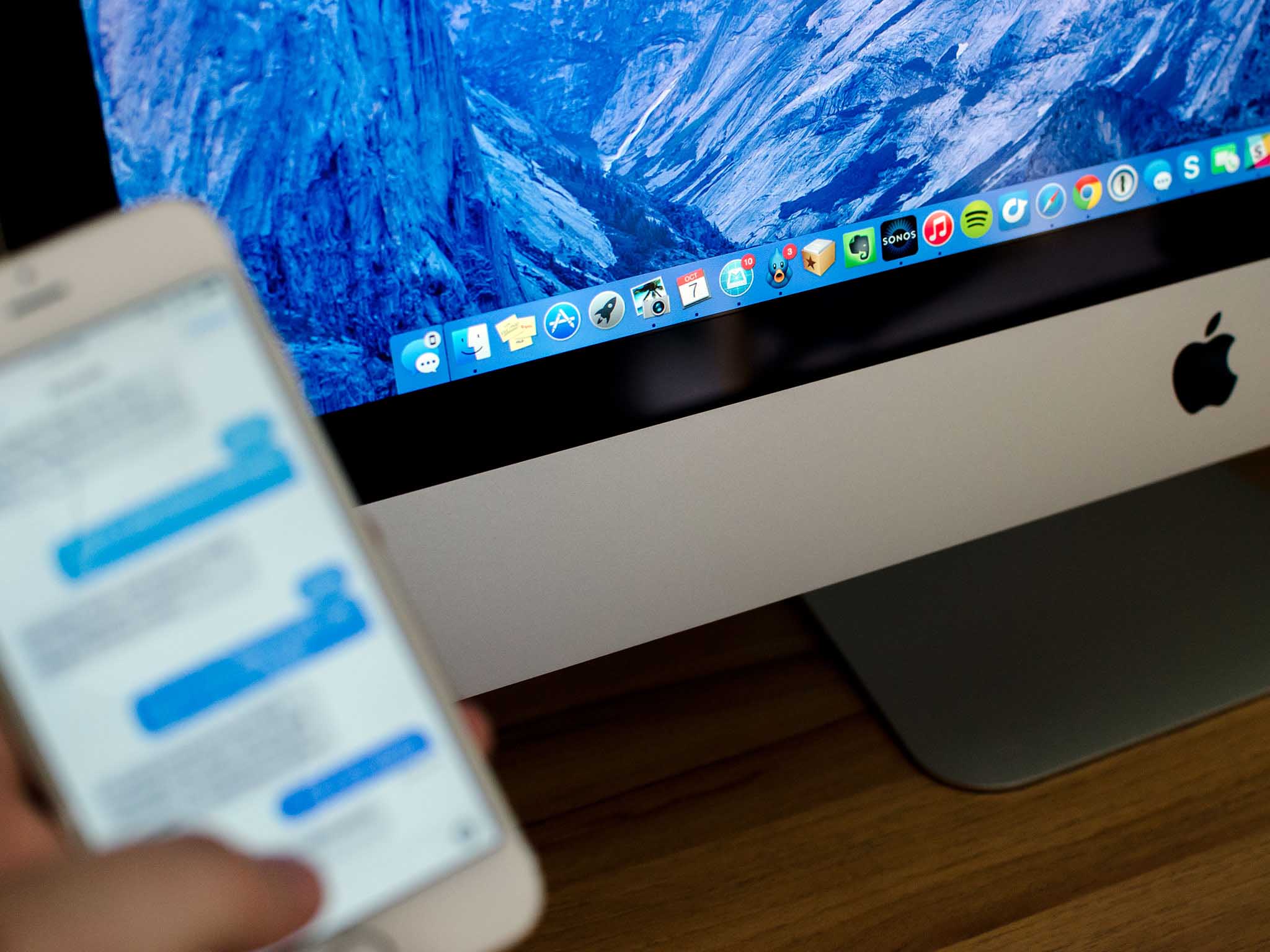Since Apple released OS X Yosemite, I've gotten one question that's bubbled to the top above everything else: How can I get my older Mac to support Handoff features? You can't, at least not easily, and that's leading some to trumpet "forced obsolescence." Not so fast. Let's have a look at what's really going on here.
Handoff features — stuff like being able to start a document on your iPad and continue on your Mac, make a phone call from your Mac, and so on — require a Mac of relatively recent vintage: 2012 or newer, according to Apple.
You can find the complete list on Apple's web site. Reading the "Feature Requirements" section may make your head boggle a bit.
Innovation versus convenience versus user experience
Handoff technology in iOS 8 and Yosemite is an incredible innovation. It makes iOS devices and OS X devices work in concert together in ways that they can't do individually.
Handoff is also a delicate dance that requires a persistent connection between both systems. To keep that persistence from draining your battery-powered devices like the iPhone and MacBook Air, Apple made Bluetooth 4.0 ("Bluetooth Low Energy") a core requirement.
You can buy a Bluetooth 4.0 USB interface for just $10 or $15 on Amazon.com, but adding Bluetooth 4.0 to your Mac isn't enough: That doesn't get Handoff features working.
Some creative Mac users working on very specific Mac configurations have been able to trick Yosemite into thinking that their Mac is equipped with hardware that it isn't, but this involves working in the terminal and modifying system library files that most of us shouldn't go near. If you really want to learn how to do that, have fun with Google, but that's a Gordian knot we don't don't want to go anywhere near on iMore.
The bottom line is that Handoff support is baked into the operating system. I believe the OS is looking at things like machine ID and chipset to figure out if Handoff should work. My guess is that Apple's done this because it can only guarantee that Handoff features will work as advertised on those systems — that other machines with third-party hardware, hacks or workarounds just don't guarantee the same quality of experience that Apple wants to support.
Unfortunately, that leaves a lot of Mac users on the sidelines, at least until they upgrade their machines. A lot of Mac users who have upgraded or plan to upgrade to Yosemite. Most seven-year-old Macs can run Yosemite, provided they're running at least Snow Leopard, have 2 GB of RAM available and 8 GB of hard disk space.
And all those Macs get the benefits of the new flat interface, new applications, and many other under-the-hood improvements that make Yosemite a great operating system. They don't, however, get some of the other benefits that Yosemite imparts to people with newer Macs.
"Forced obsolescence," cried some. "Apple's punishing us for not buying new Macs!"
We hear the "forced obsolescence" clamor almost every time Apple releases a new device or a new operating system. We heard it about iPhones just a short time ago. But there's a delicate balancing act going on here between innovation, convenience, and providing the user experience that Apple customers expect and demand.
This isn't forced obsolescence
This isn't the first time a new Mac operating system has exposed features that are only available on specific Mac models. Remember AirPlay Mirroring?
The ability to show your Mac's screen on your Apple TV first appeared with the release of OS X Mountain Lion in 2011. Mountain Lion, just like Yosemite, ran on a lot of Mac models. But only those made from mid-2011 on could use the AirPlay Mirroring feature.
Just like now, some Mac users complained about forced obsolescence.
But AirPlay Mirroring required a feature baked into the graphics hardware on newer Macs — specifically, encoding video using the H.264 video compression format, right on the graphics subsystem. That didn't require the CPU to do the heavy lifting of getting video compact enough to stream over Wi-Fi. If you've ever tried to do video encoding on your Mac, you know that it isn't a penalty-free process: It'll eat CPU cycles voraciously.
There may have been a hypothetical way for some older systems to offload that work to the CPU, but that would have compromised the basic user experience in a way that Apple just isn't going to allow. Better to chop the feature off only for that Mac hardware which will allow it to be done well rather than expose it on devices that can do it crappily.
Apple isn't in the business of providing a crappy user experience for its products.
Better communication would have been nice
If Apple has made a mistake here, it's in under-communicating.
Apple's been hyping Yosemite features like Handoff since announcing the new OS in June. But until this past week, the company didn't clearly articulate which Macs will and won't support them. Handoff isn't the only thing that older Macs are left out on, either: for persistent discovery and security reasons, AirDrop between Mac and iOS only works on newer Macs, too.
Setting expectations earlier may not have stopped everyone from complaining, but it would have at least given many of us the opportunity to calibrate our expectations accordingly.
As it stands now, though, many early Yosemite adopters are upgrading their Macs and then are surprised they don't get all the new features. The message on which Macs work with Continuity features and which don't is getting lost in all the noise.
What do you think? Is Apple forcing you to upgrade your Mac to get new features? Are you willing to live without Handoff for now, until your next upgrade? Do you think Apple should do more to support older Macs? Sound off in the comments.

No comments:
Post a Comment